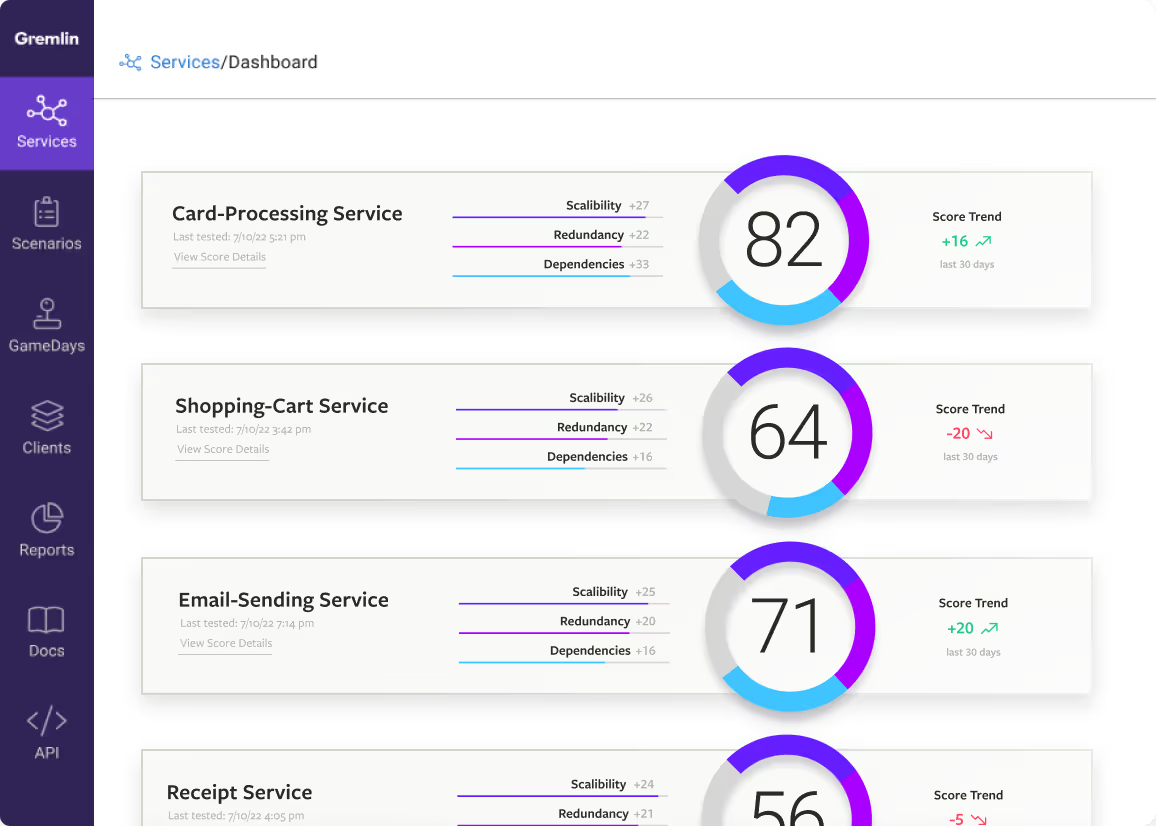Getting Started with Gremlin Attacks
Gremlin provides a variety of ways to test the resilience of your systems, which we call “attacks”. Running different attacks lets you uncover unexpected behaviors, validate resilience mechanisms, and improve the overall reliability of your systems and services.
This ebook explains each of Gremlin’s attacks in complete detail, including what each attack does, how it impacts your systems, and the technical and business objectives the attack helps solve.
Read the full report
Thanks for requesting Getting started with Gremlin attacks! View the report here. (A copy has also been sent to your email.)
About the Authors
Jordan Pritchard
Director of Infrastructure & Site Reliability Engineering
Michael Kehoe
Architect of reliable, scalable infrastructure
Rodney Lester
Technical Lead, Reliability Pillar of Well Architected Program
Tammy Butow
Principal SRE
Jay Holler
Manager, Site Reliability Engineering
Ramin Keene
Founder
In this eBook, we cover
- What an attack is and how to run each of Gremlin’s attacks
- What each attack does, the failure modes that it helps identify, and the resilience mechanisms it helps validate
- How to interpret the results of an attack and use this knowledge to improve reliability
How can adding latency to network traffic, consuming CPU on a cluster, or restarting a node group help your organization complete a cloud migration, reduce operating expenses, and better serve customers? Read our guide to Gremlin attacks to learn how.
Avoid downtime. Use Gremlin to turn failure into resilience.
Gremlin empowers you to proactively root out failure before it causes downtime. See how you can harness chaos to build resilient systems by requesting a demo of Gremlin.

.svg)





